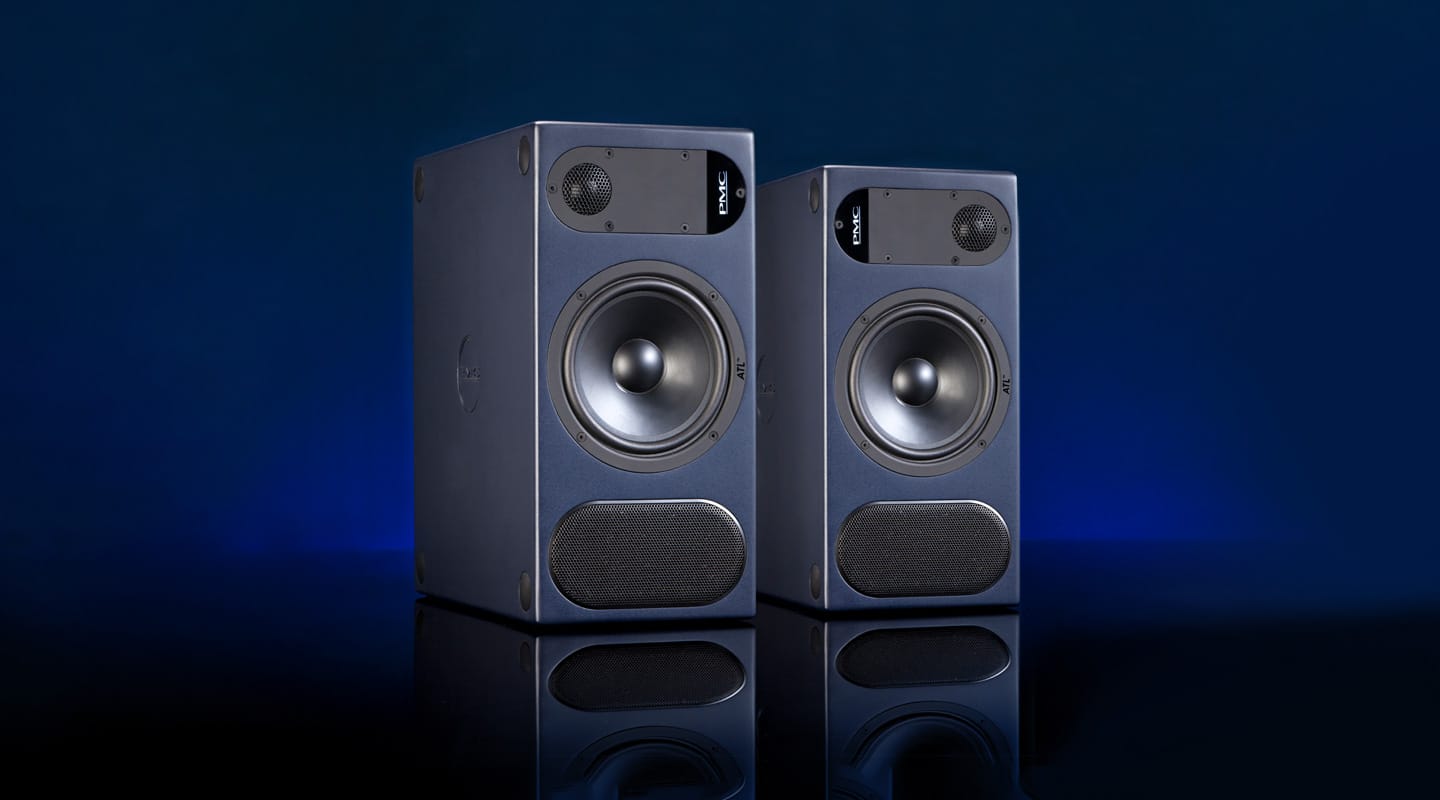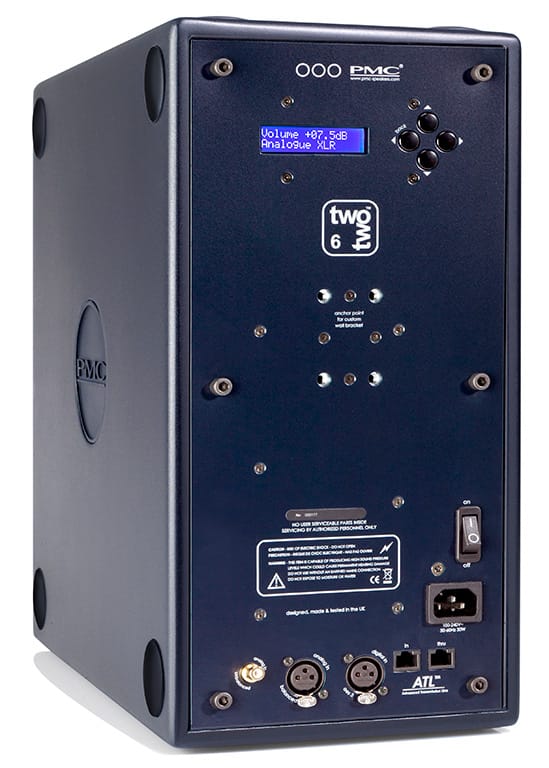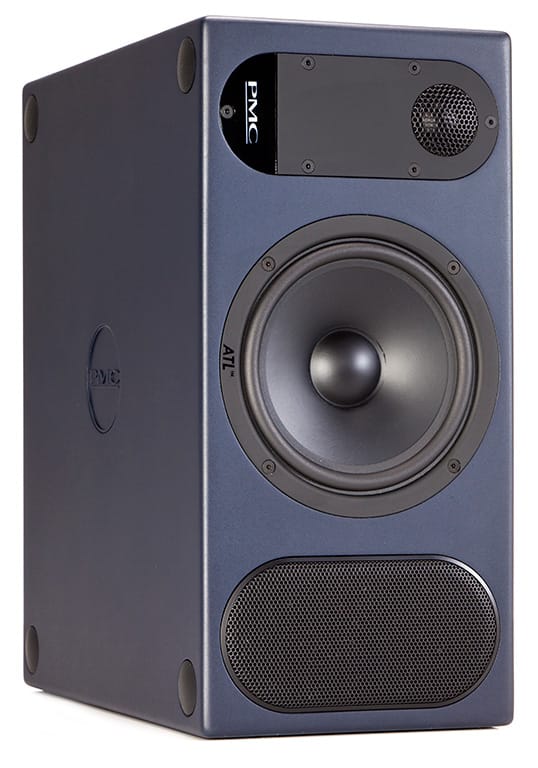
Review: PMC Twotwo.6 Nearfield Monitors
Blimey! Another pair of PMC monitors decorate my monitor bridge for the second time in 12 months.
Blimey! Another pair of PMC monitors decorate my monitor bridge for the second time in 12 months. As I mentioned in my review of the Result6 monitors, I don’t see new PMC nearfield models that often, they’re simply not that prolific. The company’s sweetspot has, for many years, been in midfield and main monitors. The kind of monitors that require a thorough installation process, soffit mounting and a crane. Have a look at PMC’s site for the QB1 XBD-A for an idea of just how far PMC will go in terms of brute strength — at 10,425 Watts per side and weighing in at 290kg, the QB1 XBD-A will will hurl you into other side of next week should you dare run them at full mizzen. I’ll stick with the more affordable nearfields for now.
PMC’s twotwo series predates the analogue-only result.6. The twotwo lineage includes all the bells and whistles — analogue and digital inputs, along with digital equalisation options. You can also control the monitors over RJ45 Cat cables with either PMC’s DMC controller or the twotwo specific rc1 controller. Interestingly, PMC has designed the twotwo range with specific left and right units. PMC suggest the high frequency drivers should be on the inside of your listening triangle. So if you want to lay the twotwos horizontally rather than vertically, you’ll need to swap the monitors over.
So gracing my monitor bridge are two twotwo.6 monitors — the middle child of the range. These sport a 6.5-inch low frequency driver, while the twotwo.5 offers a 5.5-inch, and the twotwo.8 housing an eight-inch driver. All are powered using Class-D amplification with 50W for the high-frequency driver and two amps bridged providing 150W to the low-end. The high-end driver is a 27mm soft dome unit while the low-frequency unit is a doped-paper cone design. Of course, PMC’s ATL transmission line design is used in the cabinet design, with porting via the front baffle. Much was spoken about transmission line designs in my review of the Result6 from AT127. It’s certainly not a new concept, having initially appearing back in the 1930s, yet PMC has become the foremost proponent of transmission line design to date. But in a nutshell, transmission line designs provide superior bass extension and higher SPL capability compared to the usual ported or sealed cabinet of a similar size. An additional advantage is an even frequency response across all listening levels.
WELL CONNECTED
Connectivity-wise there’s quite a lot going on out back of the twotwo monitors. Analogue connection is via either balanced XLRs or unbalanced RCA connectors, while digital connection is AES/EBU XLRs. Juggling your digital channels involves connecting the RJ45 connectors. The Thru RJ45 connection will carry digital audio to the next monitor’s RJ45 In, whether that be in a stereo setting or surround monitoring rigs. However, should there be both AES/EBU and the RJ45 connectors receiving digital audio signal the AES/EBU input will take priority. Unfortunately there’s no Dante compatibility, which is a shame.
To the top rear of the twotwo cabinets is an LCD display and four software navigation buttons.These access all settings as to input level and for the DSP-based equalisation. EQ options include high and low shelf EQs over a ±4dB range in stupendously accurate 0.125dB steps, with the high-end frequency point at 1kHz for some surgical tizz and the low shelf set at 500Hz (the smaller twotwo 5 models have a 750Hz low-end shelf). PMC advise the low-end rolloff is primarily used to counteract the effect of room boundaries, with an additional 6dB/octave high-pass filter at 50, 80, 120, 150, or 200Hz to further assist close to wall setups, and in configuring surround setups. Other functions include trim, input sensitivity, input source, and dim time for the LCD backlight. The monitors will also go into standby mode, or sleep. Great for saving power, but a little disconcerting when you initially arc up a pair and one monitor comes to life before the other — that sent me on a troubleshooting goose-chase for a (thankfully) short while. The wake process isn’t nearly as pronounced when using the digital inputs, though.
Being DSP controlled and allowing connection of digital signals, the units obviously involve A/D and D/A conversion. Conversion is of the delta-sigma variety and can accept sample rates from 32 to 192k, but output is always converted to 96k before hitting the amplifiers.
NEED TO KNOW



ALARMINGLY GOOD
I took PMCs advice and ran the twotwos in for the advised 20 hours. After hearing no discernible difference I assumed that being a demonstration pair they’d probably done a few miles before I clasped ears on them. That said, There wasn’t a lot I disliked about the twotwos. The bass extension is, as always with PMC monitors, impressive, and, as so many will tell you, linear throughout whichever SPLs you care to shunt into them. The twotwo.6 units are however, quite clinical, but there’s a plethora of finessing you can employ with EQ options to get them ‘in the pocket’. However, once you’ve settled into a perfect EQ the imaging is alarmingly stable. Midrange detail is quite astounding for a two-way monitor — far superior to any in my collection of two-way systems. It’s hard to fault the twotwos. If you’ve the pockets for PMC’s flagship nearfields you’d be doing yourself a disservice not auditioning them.

























RESPONSES